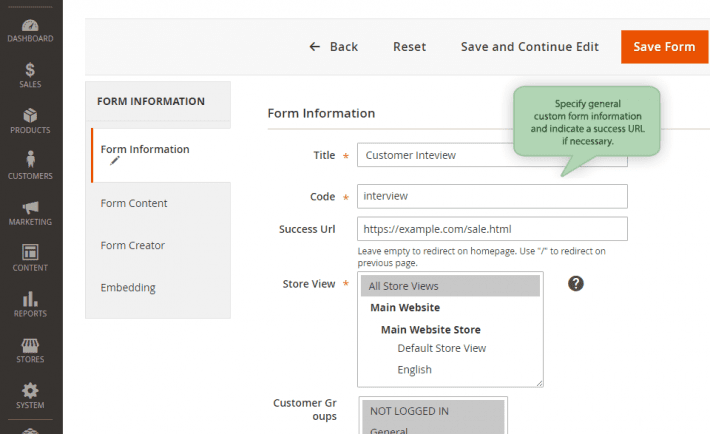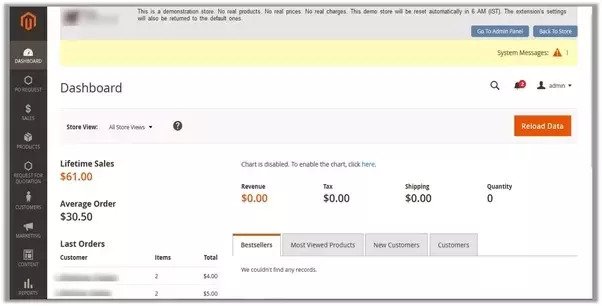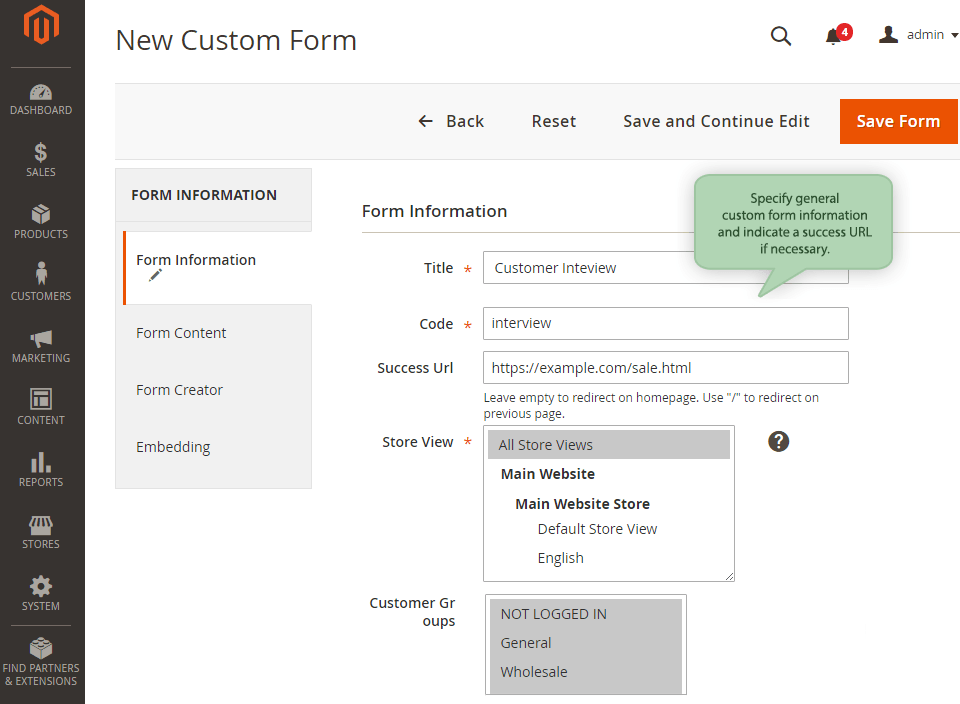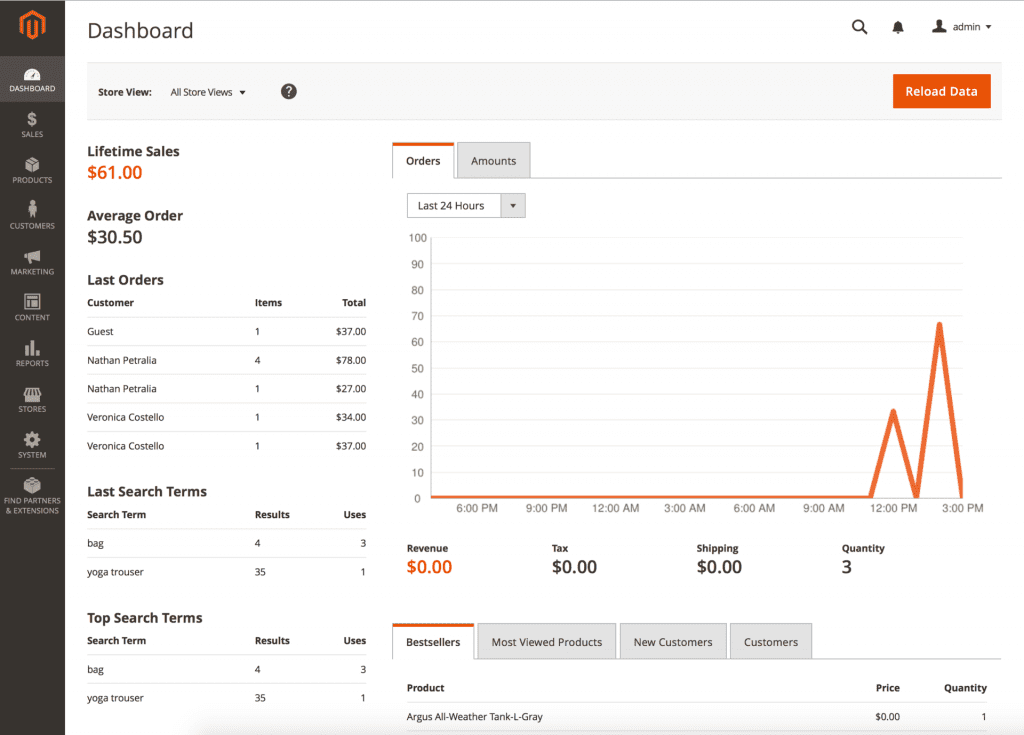
No two e-business models are the same. Yes, they share the same platform, i.e., the internet, but that’s where the similarities end. Each business has its own resources, market base, and needs. So, you cannot have one generic e-commerce system for all kinds of enterprises.
Today, entrepreneurs are looking for a flexible, customizable solution that caters to their specific needs. Magento is one such e-commerce store builder that caters to budding and large-scale organizations. Let’s take a look at some of its top features and reasons why you should move to Magento 2 ASAP.
Magento – An Overview
What is Magento? A Comprehensive Overview
A decent website builder doesn’t just offer a set of responsive design tools but also gives developers a platform to promote their product online. Magento offers customers a complete e-commerce solution that meets all your store building requirements. The platform currently holds 14% of the market share empowering several start-ups and established enterprises. Experts have predicted that the launch of Magento 2 would increase this percentage.
The Magento community comes in two distinct versions – Magento OpenSoure (community edition) and Magento Commerce (enterprise edition). Both these editions are available on Cloud and suit different business models. And extremely scalable and flexible platform, Magento was acquired by eBay a couple of years ago.
What About Magento 1?
Magento wasn’t always such a popular platform as it is today. Back in the day, this e-commerce solution lacked certain basic functionalities and features such as mobile optimization, admin capabilities, and store-building tools. It also lacked some of the extensions and plugins that other e-commerce platforms had. Earlier, users had to go to third-party companies to access the essential development tools. Magento 1 was considered slow and incompetent. It was only in 2015, with the launch of Magento 2, that the company gained a solid reputation in the market.
Advantages of Magento 2

What are the major benefits from Magento 2?
Like every other technology, Magento also has its fair share of ups and downs, although here, the good far outweighs the bad placing the platform at par with applications like Shopify and WooCommerce. Listed below are a few reasons why you should invest your time and effort in Magento 2 and make it your e-commerce software.
Open Sourced and Self Hosted
Self-hosted platforms give you the creative freedom to design and develop your store the way you like. All you have to do is download the software, install it in your system and then get to work. The open source framework gives you direct access to the source code.
You hold the entire responsibility of the presentation and promotion of the store. A self-hosted framework, as opposed to a hosted e-commerce platform, is a lot more flexible and user-friendly. You are in control of what goes in the store and how the customer reacts to it. Plus Magento 2 is free!
SEO Edge
Magento 2 offers you full ownership of the store and its activities. You can make your own roadmap, set things at your own pace and tweak the interface to your liking – all in but a few clicks. However, simply building a kickass store is not enough; you also need to market it right. This is where SEO comes in.
You can set up the most amazing store online, but it will all be for nothing if people don’t see it on their search page. Magento 2 has strong SEO support that boosts your online visibility drastically. You don’t just get the views but also some effective tactics to convert these leads to actual sales.
Speed and Performance
Magento 2 is definitely a lot better than its earlier version, that’s something we’ve all agreed on. But, would Magento prove to be better than the other popular ecommerce platforms like Shopify or BigCommerce? Let’s find out. Now, Magento, unlike others, is a self-hosted platform, this means the onus is on you.
You are solely responsible for the effectiveness and traffic management on the server. And while that’s partly a good thing because you get complete control over your store, it also means extra work. The Commerce Cloud version provides free hosting, giving you the assurance that your site will always be live.
Versatile and Customisable
With Magento 2 you can tweak the HTML code and CSS stylesheets if you have the required coding skills. For others, the WYSIWYG interface offers an intuitive, interactive design where you can create stores without writing a line of code. Simply choose a template, add the content and post it online- it’s that simple really!
You get an extensive collection of free themes, templates and readymade layouts once you’ve logged in. These templates are designed to suit all business models and storefront requirements. The interface is loaded with editing tools to add images, post videos, and graphics. Also, the store is optimized for mobile devices. In fact, a mobile version of your website is automatically generated as soon as you publish the store online.
E-commerce Tools

10 Essential Magento Extensions You Need
Websites and we stores are two very different things, although they’re both hosted on the internet. Anyone can develop a website, add content and get a decent audience base. However, you need to be extremely sharp and perceptive to make a successful e-store. Setting up the store, managing the catalogs, adding credible content, order management or invoicing, site management and CMS functionality – they’re all part of the process. Magento 2 helps you with all that. Thanks to Magento, users can now browse through an organized catalog, add stuff to their cart, mark their favorite items and pay through cash/card or other payment gateways like PayPal.
Smart Inventory Management
Each e-commerce platform offers its special take on inventory management. Magento is no different; it caters to all business models and storefront options. From large-scale enterprises to growing start-ups, almost anyone can build a website with Magento provided they have an idea and good content to back it up with.
Here, you get functions like inventory importing, categorizing products, creating filters, adding catalogs and shopping carts etc. that enhances the overall shopping experience for the user. You can insert several products of varying types, sizes and price ranges, organize them and put them on display. Plus you can even add third-party integrations and extensions to your store to improve its performance.
Magento 2 Form Builder

Magento 2 is not just compatible with building stores and e-commerce websites. You can do loads of other things here, one of them being creating contact forms. You need adequate and accurate customer information before you make decisions about what to sell them and how. Forms help you with that. Customs forms for Magento 2 make your business more client oriented. Some of the best form builder extensions for Magento are Amasty, Nextbits, LandofCoder, and MageMe. These third-party extensions are optimized for Magento and essential for your client to customer communication.
The Bottom Line
The launch of Magento 2 has stirred up the market as more and more stores are moving to the platform. The new version maintains the flexibility that Magento is known for, impressing both admins and customers alike. Add to it the streamlined checkout process, quick traffic management, and efficient customer support team, and you’ve got a keeper.





